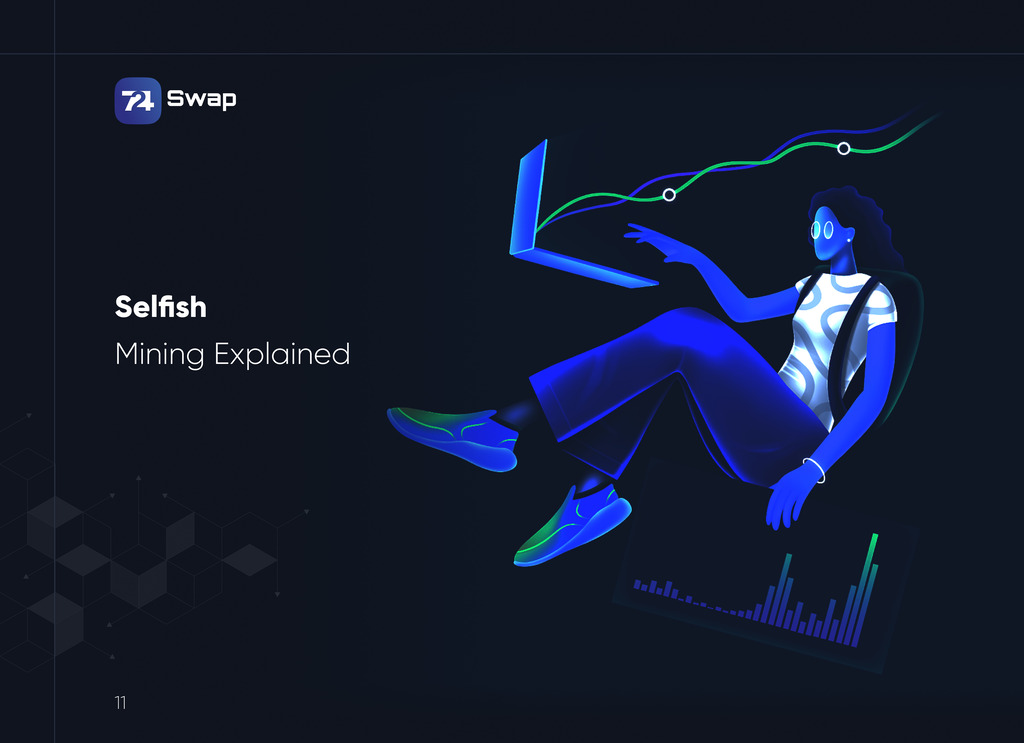Selfish Mining Explained
Introduction
In the realm of blockchain and cryptocurrencies, maintaining the integrity and security of the network is paramount. The consensus mechanisms that underpin these networks are designed to ensure fair and equitable participation among miners. However, certain strategies can be employed by malicious actors to subvert these mechanisms for personal gain. One such strategy is known as selfish mining. This article explores the concept of selfish mining, how it works, its implications, and potential solutions to mitigate its impact.
What is Selfish Mining?
Selfish mining is a strategy where a miner (or a group of miners) attempts to gain a disproportionate share of the mining rewards by selectively withholding and releasing blocks. This tactic exploits the inherent design of blockchain networks, where the longest chain is considered the valid chain. By keeping their mined blocks private for a period and then releasing them strategically, selfish miners can force honest miners to waste computational power on blocks that will ultimately be orphaned.
The Mechanics of Selfish Mining
Basic Principles
- Private Chain: In selfish mining, the miner starts by mining a block and keeping it secret from the rest of the network, thus creating a private chain.
- Public Chain: Honest miners continue to work on the last known public block, unaware of the private chain being developed.
- Strategic Release: The selfish miner only releases their private chain to the public network when it provides them with a competitive advantage. For example, if they mine additional blocks on top of their private chain, they might release the chain when it is longer than the public chain.
Steps Involved
- Initial Block: The selfish miner mines a block and withholds it, creating a private chain with a single block.
- Race Condition: Honest miners continue to mine on the public chain. If they mine a block, the public chain lengthens.
- Competing Chains: The selfish miner continues to mine on their private chain. If the private chain grows longer than the public chain, the selfish miner publishes their chain, making the honest miners’ blocks obsolete.
- Propagating the Private Chain: By timing the release of their private chain, the selfish miner can ensure that the network adopts their longer chain, leading to the orphaning of the blocks mined by honest miners.
Impact of Selfish Mining
Network Security
Selfish mining undermines the security of the blockchain network by creating an environment where mining power is not used efficiently. It can lead to increased centralization, as smaller miners may struggle to compete against selfish miners, ultimately reducing the decentralized nature of the network.
Reward Distribution
One of the primary consequences of selfish mining is the skewed distribution of mining rewards. Selfish miners can achieve higher rewards with less computational power compared to honest miners, leading to an unfair advantage and potentially discouraging honest participation in the network.
Forks and Instability
Selfish mining can result in frequent forks and orphaned blocks, causing instability within the network. This can increase the risk of double-spending attacks, where transactions in orphaned blocks are invalidated, leading to confusion and potential loss of funds for users.
Detecting Selfish Mining
Block Time Analysis
One way to detect selfish mining is through block time analysis. By examining the intervals between blocks, irregular patterns can be identified that may indicate the presence of a selfish miner. For instance, unusually long intervals followed by a burst of blocks can suggest strategic block release.
Network Monitoring
Monitoring the propagation of blocks within the network can also help detect selfish mining. If a particular miner consistently releases multiple blocks in quick succession, it may be an indication of selfish mining behavior.
Mitigating Selfish Mining
Difficulty Adjustment Algorithms
Implementing more responsive difficulty adjustment algorithms can help mitigate the impact of selfish mining. By adjusting the mining difficulty more frequently, the network can respond to irregularities caused by selfish mining, making it less profitable.
Penalizing Orphaned Blocks
Introducing penalties for miners who consistently produce orphaned blocks can discourage selfish mining. This could be achieved by reducing the rewards for blocks that are part of a chain that frequently gets orphaned.
Enhancing Block Propagation
Improving the speed and efficiency of block propagation within the network can reduce the advantage gained by selfish miners. Faster block propagation ensures that honest miners receive new blocks more quickly, reducing the chances of a selfish miner successfully extending their private chain.
Case Study: Bitcoin and Selfish Mining
Bitcoin, the first and most widely used cryptocurrency, has been a primary target for selfish mining strategies due to its significant mining rewards. Several studies and simulations have demonstrated the feasibility of selfish mining in the Bitcoin network, highlighting the need for robust countermeasures.
The Eyal-Sirer Model
In 2013, Ittay Eyal and Emin Gün Sirer published a seminal paper outlining the selfish mining strategy and its potential impact on the Bitcoin network. Their model showed that a selfish miner with just 33% of the network’s total hash power could potentially destabilize the network and gain more than their fair share of rewards.
Responses and Solutions
The Bitcoin community has proposed various solutions to mitigate selfish mining, including adjustments to the difficulty adjustment algorithm and enhancements to block propagation mechanisms. However, the decentralized nature of Bitcoin makes implementing these changes challenging, requiring consensus from the majority of network participants.
Conclusion
Selfish mining presents a significant threat to the integrity and fairness of blockchain networks. By exploiting the consensus mechanisms, selfish miners can gain an unfair advantage, leading to centralization and instability. Detecting and mitigating selfish mining requires a combination of technological advancements and community consensus. As blockchain technology continues to evolve, addressing these vulnerabilities will be crucial to ensuring the long-term viability and security of decentralized networks.
